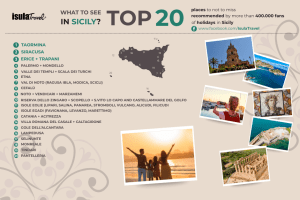- Blog
- Isola di Pantelleria
Isola di Pantelleria
The island of Pantelleria is 85 kilometers from Sicily and 70 from Africa. Pantelleria is known as the Black Pearl of the Mediterranean, as it’s the emerged part of a volcanic formation.
One of the features of Pantelleria consists of the traditional "dammusi" farm buildings built with lava stones, stone walls, white domed roofs and openings with round arches.
The island is an alternation of low coasts, jagged cliffs that sometimes give place to beautiful caves including Cala Levante, Grotta delle Sirene, Cave Palombi Punta Ciaccazza. Thermal waters are present in the Gulf of Venus called "U Vagnu”. In many parts of the lake are sulfur springs, "quadareddi" and mud rich in minerals.
From the archaeological point of view, particularly important are the "Sesi" stone tombs, unique in the world, and its Neolithic remains of the first settlement dated back to the late Bronze Age; works dating back to the Phoenician-Punic period, such as the Acropolis Phoenicia, became Roman; the remains of St. Mark's hill, where they were discovered among the rest, urns, lachrymatories, glass containers for perfume; Phoenician tombs in the monastery and tanks in the Punic Muegen, behind the Island and Kania. Interesting coins with the effigy of the goddess Tanit, minted by the Phoenicians as a symbol of autonomy and wealth of the island; tanks bell; sanctuaries near Lake of Venus and Bugeber; the rock-cut tombs in the area of Garland; the port with the Phoenicians of a breakwater. Finally, worthy of attention is the Castle Barbican, medieval times, with the massive black lava stone structure, built on the Phoenician and Roman fortification, but rebuilt by the Byzantines, Arabs and Normans several times.
In relation to the naturalistic part of the island, on the highest part of Big Mountain, develops a rich undergrowth consists of mosses and lichens, from the Aleppo pine and maritime pine. A hint is obligatory in reference to the typical products of the island, among which we recall the Raisin, Zibibbo and the famous capers.






